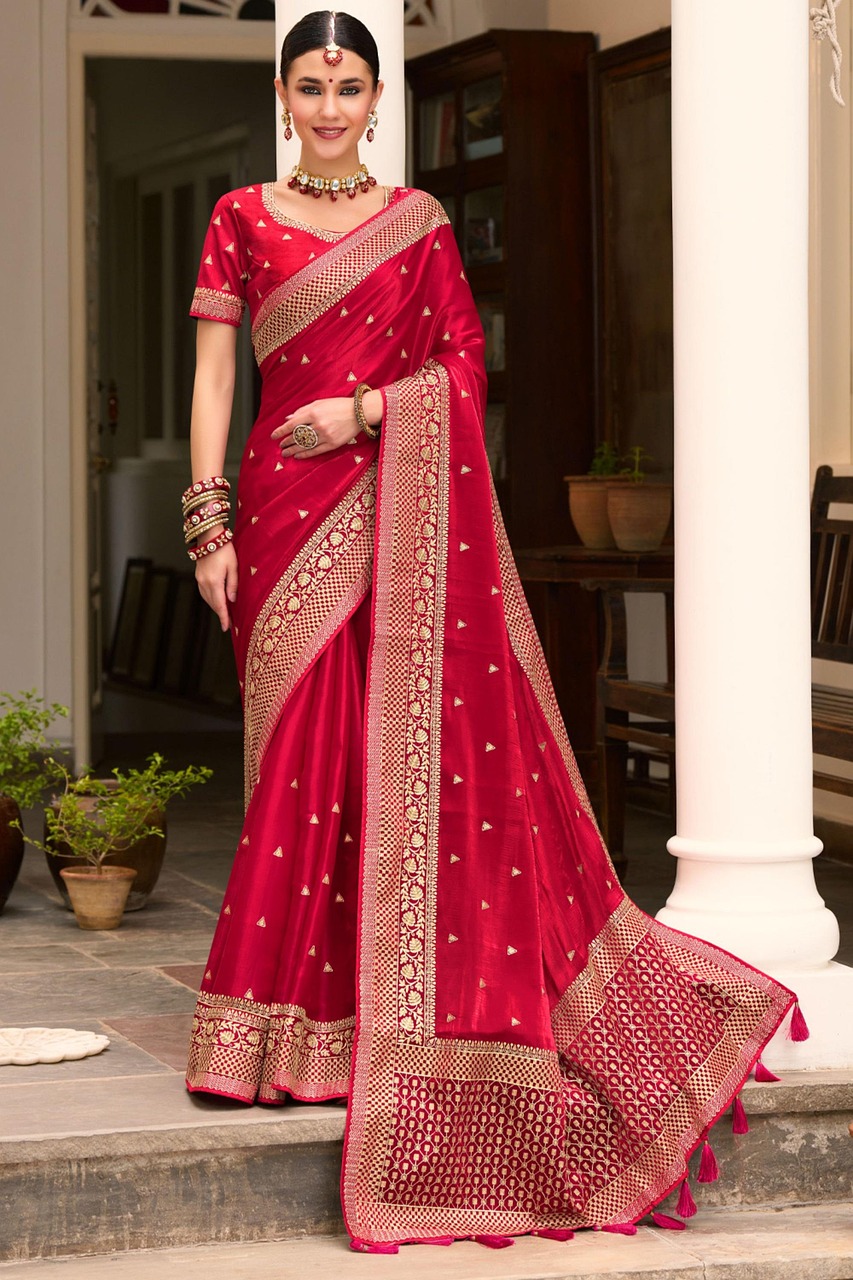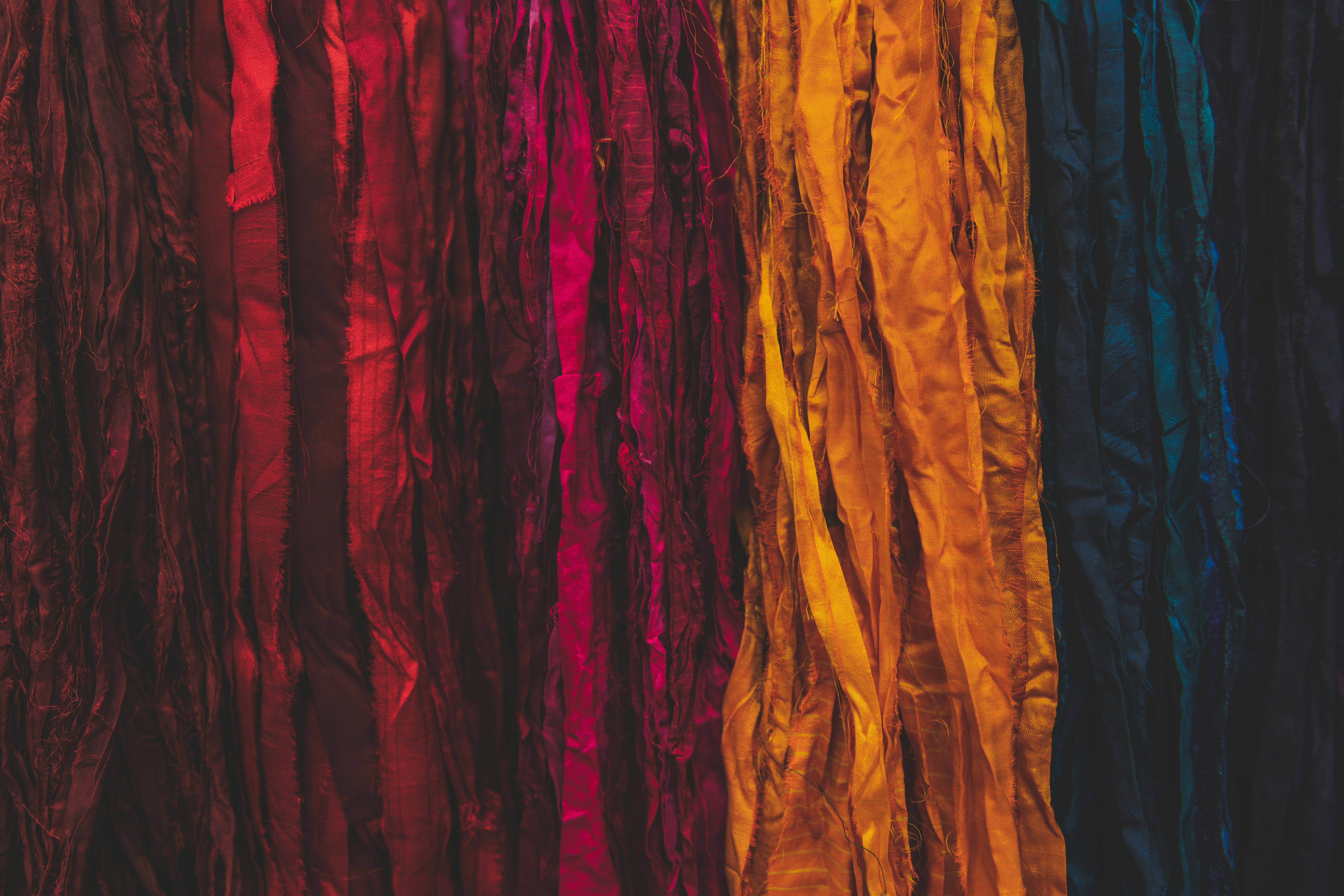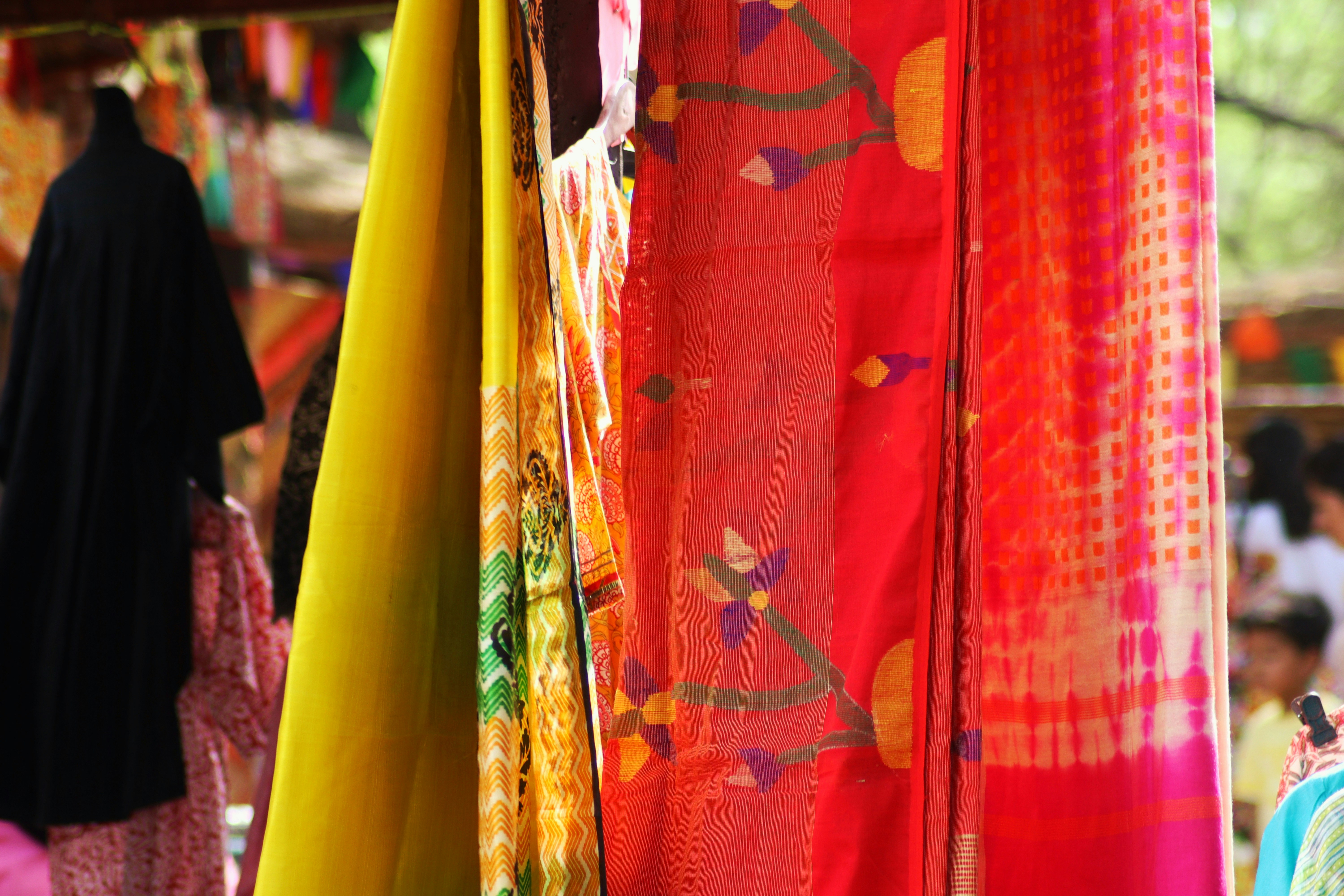
The saree a timeless piece of clothing that embodies grace, elegance, and cultural heritage has adorned Indian women for centuries. But did you know that the way a saree is draped changes from state to state across India? Each region has developed its own unique draping style, influenced by local culture, climate, tradition, and utility. These styles do more than just clothe the body; they tell a story.
In this blog, we’ll take you on a journey across India to explore 10 iconic saree draping styles, offering a glimpse into how each fold, tuck, and pleat celebrates regional identity.
1. Nivi Style (Andhra Pradesh & Telangana)
The most widely known saree draping style is the Nivi drape, believed to have originated in Andhra Pradesh. In this style, the saree is wrapped around the waist with the loose end (pallu) draped over the left shoulder. Pleats are tucked in at the front for ease of movement.
This is the standard drape you’ll find at most formal events and workplaces across India because it’s both elegant and functional. It’s also the go-to style for those new to sarees.
2. Bengali Style (West Bengal)
Known for its regal simplicity, the Bengali drape features no pleats at the waist. The saree is wrapped around the waist and brought back around the body again. The pallu is then thrown over the left shoulder and brought up under the right arm to rest once again on the left shoulder.
This style often features a key ring or a set of keys tucked at the waist a symbol of responsibility and tradition among married women in Bengali households.
3. Maharashtrian Nauvari (Maharashtra)
The Nauvari saree, typically nine yards long, is draped in a style resembling a dhoti. Traditionally worn by Maharashtrian women, especially during festivals like Ganesh Chaturthi, it allows for ease of movement making it ideal for women who were warriors and farmers.
The pallu is worn over the shoulder and can be either front-facing or back-facing. Accessories like nath (nose ring) and green bangles complete the look.
4. Gujarati Style (Gujarat)
In the Gujarati seedha pallu style, the pallu is brought over the right shoulder and spread across the front of the body. This makes the elaborate designs on the pallu more visible.
Often seen at weddings and garba nights, this drape symbolizes tradition and femininity. It’s also frequently used with Bandhani sarees, which are popular in Gujarat and Rajasthan.
5. Coorgi Style (Karnataka – Coorg Region)
Worn by women of the Kodava community, the Coorgi drape has a unique charm. The pleats are tucked at the back rather than the front, and the pallu is draped under the left shoulder and pinned over the right.
This style is both practical and modest, reflecting the active lifestyle of women in this hilly region.
6. Madisar (Tamil Nadu – Iyer & Iyengar Communities)
Traditionally worn by Tamil Brahmin women, the Madisar style uses a nine-yard saree and has a distinct look similar to a dhoti at the bottom and a flowing drape on the top.
This saree is usually worn during religious ceremonies, weddings, and festive rituals and is a symbol of married status for women in Tamil Brahmin culture.
7. Mekhela Chador (Assam)
Technically not a saree in the traditional sense, the Mekhela Chador consists of two main pieces. The Mekhela is worn like a skirt and the Chador is draped over the upper body.
Its unique folding and wrapping technique make it one of the most elegant traditional wears in the Northeast. Often adorned with Assamese silk motifs, it’s commonly worn during Bihu festivals and cultural events.
8. Odisha Draping Style (Odisha)
This drape features minimal pleating and allows the pallu to fall over the left shoulder, often left loose or tucked at the waist.
Odisha’s handloom sarees like Sambalpuri or Bomkai are best showcased with this simple and graceful drape. The style is suited for both daily wear and formal occasions.
9. Mundum Neriyathum (Kerala)
Worn primarily by Malayali women, this drape uses a two-piece garment resembling a saree. The Mundu is worn around the waist, and the Neriyathu is draped over the shoulder like a saree pallu.
White or cream-colored fabrics with gold borders (Kasavu) are iconic in this draping style, making it a staple during festivals like Onam and Vishu.
10. Tribal and Folk Styles (Various States)
Many tribal communities have their own unique saree draping techniques. For example:
- Santhal women in Jharkhand drape sarees without a blouse or petticoat.
- In parts of Chhattisgarh, the saree is wrapped more like a sarong.
- North-Eastern tribal women often combine traditional handwoven fabrics with wraps that double as skirts or cloaks.
These styles often reflect indigenous customs, practicality, and environmental harmony.
Regional Drapes: Fashion or Function?
The diversity in saree draping is not just about aesthetics it often evolved for practical reasons:
- Climate: Light cottons in humid Kerala, wool-blend sarees in cold Himachal.
- Occupation: Farmer women in Maharashtra need free movement.
- Rituals and customs: Married women wearing nine-yard sarees in Tamil Nadu for ceremonies.
- Fabric length and type: Six-yard vs. nine-yard, or silk vs. cotton sarees.
Modern fashionistas and designers have taken inspiration from these traditional drapes to reinvent and blend styles, making sarees both culturally rooted and globally admired.
Tips to Master Saree Draping
Choose the right fabric: Cotton for comfort, silk for occasion, chiffon for elegance.
Use pins smartly: They help secure the saree without ruining the fabric.
Invest in a good blouse and petticoat: The right fit makes all the difference.
Practice: Mastery comes with trial and error.
Take cues from YouTube or local tailors: Plenty of tutorials are available for each style.
Conclusion: A Cultural Tapestry in Every Fold
The art of saree draping is an expression of identity, creativity, and culture. With over 30 documented styles and numerous regional variations, the saree remains one of the most versatile garments in the world. Whether you’re embracing it for a festive occasion or simply for its elegance, each draping style connects you to a part of India’s rich and diverse heritage.
So next time you wear a saree, try a new regional style. In every fold lies a story of the people, their history, and their art.





